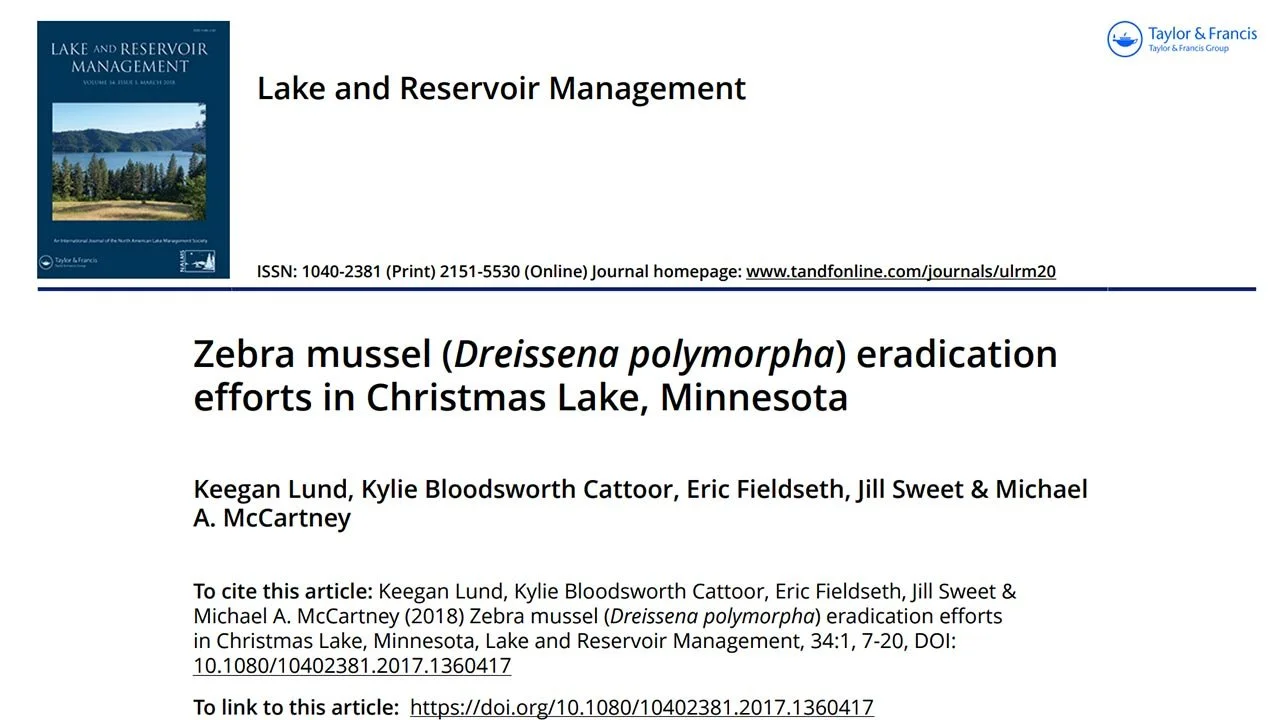Zebra mussel eradication efforts in Christmas Lake, Minnesota
Abstract
Publication: Lake and Reservoir Management
The study “Zebra Mussel (Dreissena polymorpha) Eradication Efforts in Christmas Lake, Minnesota,” published in Lake and Reservoir Management, documents one of the most comprehensive and ambitious zebra mussel control efforts in open freshwater. In 2014, an early-detection program discovered a small infestation near a public boat ramp in Christmas Lake, a clear, spring-fed lake near Lake Minnetonka. Rapid response followed with the application of three molluscicides—Zequanox, EarthTec QZ, and potash—each applied in partial-lake treatments over multiple seasons.
Despite the use of containment barriers, careful monitoring, in-lake and lab bioassays, and innovative techniques including under-ice application, the infestation eventually re-emerged in untreated areas of the lake. While full eradication was not achieved, the project yielded valuable insights into product efficacy, lake dynamics, and early detection strategies. Key findings highlight the challenges of containing mussels, especially at low densities and in lakes with high-value shorelines.
This case underscores the importance of early detection, rapid and coordinated action, and post-treatment monitoring. It also contributes protocols and efficacy data to guide future zebra mussel response efforts. The study emphasizes that while eradication is difficult, suppression and containment remain valuable management goals in fighting invasive aquatic species.

